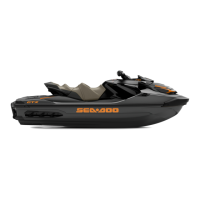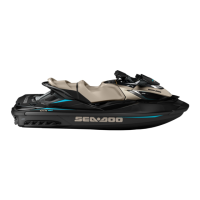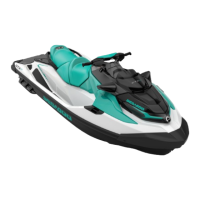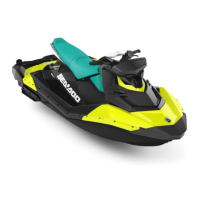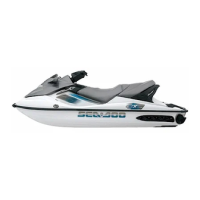Section 07 ENGINE MANAGEMENT (DI)
Subsection 02 (COMPONENT INSPECTION AND ADJUSTMENT)
FUEL PUMP
Pressure Test
The pressure test will show the available pressure
from the fuel pump.
Ensure there is no leak from hoses and fittings.
Repair any leak.
Ensure there is enough gas in fuel tank.
UsetheVCK(VehicleCommunicationKit)tore-
lease the fuel pressure in the system. Look in the
Activation tab of the software B.U.D.S.
Disconnect inlet and outlet hoses from fuel pump
using tool (P/N 529 035 714).
Connect T-adapter and pressure relief valve to
pressure gauge as shown.
32
1
F12R0AA
1. Pressure gauge (P/N 529 035 709)
2. T-adapter (P/N 529 035 710)
3. Pressure relief valve (P/N 529 035 711)
CAUTION: Make sure to install pressure relief
valve to allow excess pressure to escape and
to point valve arrow as shown above. Note the
arrow on the valve. Otherwise, air compressor
components might be damaged.
Install pressure gauge between disconnected
hoses on fuel pump side (closed-loop installation
on fuel pump). Make sure the pressure-relief
valve is installed on the fuel pump return line side.
1
2
3
4
F12R0BA
1. Fuel pump outlet hose (fuel filter side)
2. Fuel pump return line
3. Fuel relief valve on the return line side
4. Pressure gauge between disconnected hose (inline installation)
Install safety lanyard and observe fuel pressure.
MINIMUM FUEL PUMP PRESSURE
(when installing safety lanyard)
721 kPa (105 PSI)
If pressure is within limits, fuel pump is working
adequately.
If pressure is below limits, ensure fuel filters are
not obstructed. There is one in-line fuel filter at
the fuel pump outlet hose and one filter at the
inlet underneath the pump. Otherwise, replace
the fuel pump.
Remove pressure gauge and reinstall fuel hoses.
At installation apply engine oil on O-ring.
352 smr2004-Complete Line Up
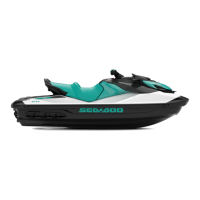
